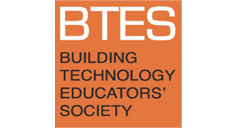Automated Comprehensiveness: Sectional Practices and the Misuse of Revit
Abstract
All architectural drawings leave gaps in information. Drawing sets leave the impression that a combination of drawing types is comprehensive, that more information is better, but gaps always exist. In generating architecture, these gaps serve as opportunities for ambiguity, speculation, and exploration. The introduction of BIM in the late twentieth century and its more ubiquitous application in Autodesk’s 2004 release of Revit, challenged these previous notions of orthographic comprehensiveness as many images could be output from a single digital model. As representational types, plans, sections, elevations, and details did not disappear. Yet, the historic and conceptual practice for generating architecture through them started to. In Revit, the particular disappearance of sectional practices has been impacted by the automation of the section cut. What is lost when section cuts are automated through a digital tool like Revit and how can the tool be used to support sectional practices once again? The studio work presented in this paper focuses on the ontological transition from orthography to BIM, the impacts of automated processes, and the role of implementing sectional practices in a post- orthographic setting by critically examining specific tools and commands used in Revit. Ultimately, the work exemplifies a pedagogical approach that stems from the “misuse” of Revit as an archaeological and generative sectional tool for exploring gaps in information.
Keywords: Pedagogy, Computational Design and Analysis, Structures, Materials and Construction Techniques
How to Cite:
Garcia Fritz, J., (2019) “Automated Comprehensiveness: Sectional Practices and the Misuse of Revit”, Building Technology Educators’ Society 2019(1). doi: https://doi.org/10.7275/hj4m-q561
Downloads:
Download PDF
337 Views
186 Downloads

